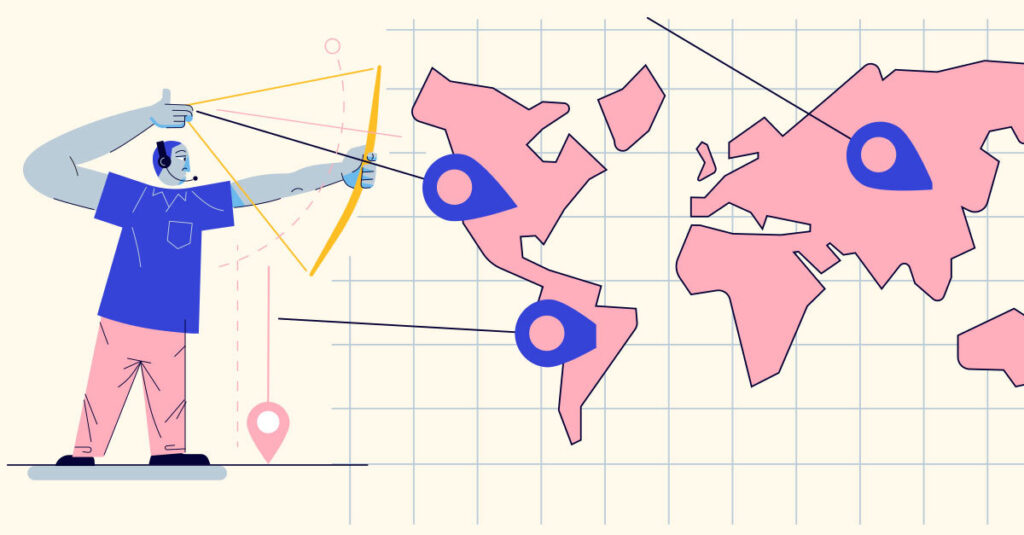 Communicating with your customers should be a smooth, simple process for both parties — even if it’s in multiple languages. But many enterprises find their translation jobs unnecessarily complex as they go multilingual because their content isn’t “translation-friendly.”
Communicating with your customers should be a smooth, simple process for both parties — even if it’s in multiple languages. But many enterprises find their translation jobs unnecessarily complex as they go multilingual because their content isn’t “translation-friendly.”
If you’re planning to go global, try to keep translation in mind throughout your content creation process. It can save time and money and improves the consistency and readability of your translated files. From marketing and advertising materials, to website copy and chat, product descriptions, blogs and ebooks, and even technical and safety manuals, here are four tips to help you prepare your content for translation and improve your translation efforts.
1. Determine the purpose of your text and your target audience
As with any content you create, you want to define what you’re communicating and why. It also almost goes without saying that you’ll need to write with your reader in mind.
Defining your reader
If you’re planning on translating your text, bear in mind that your reader may be different across your different target languages. Their perspective and education level may differ, and you might need to adapt your tone, communication style, or level of detail accordingly.
Noting cultural differences
Cultural norms often vary between target markets, languages, and locales. This needs to be reflected in your content creation. It can affect the tone — some languages are more formal than others — and the use of local references. You may choose to translate only the sections relevant to each country or language, reducing the length of your source material.
Planning for translation
Where possible, choose — or be aware of — the target languages for translation before you start your content creation. Obviously, there will need to be flexibility in this, as your business may move into new markets, but understanding the breadth of your language requirements helps provide the best platform for content creation. As differences in languages can affect the number of characters, and subsequently the target text length and the final layout.
2. Aim for consistency
Consistency is key for getting quality translations of your content, at scale and speed.
Style guides and terminologies
Creating and developing a terminology and style guides helps content writers use standardized text and approved terms. As part of this, you will also want to define and localize keywords. Ideally, you would create monolingual terminologies and style guides. From this, you can build bilingual versions in your target languages for a straightforward and effective translation process.
For example, defining and localizing your greetings and sign-offs for emails can vastly change how your company interacts internally and with clients. In British English, ‘Regards’ can be thought of as a professional conclusion to an email to a non-native speaker. Those familiar with the nuances of the word know it can be considered cold or a little harsh in a given circumstance.
Creating language pairs
Of course, not all your content is text-based, so you need to prepare for dealing with measurements and numerals. For example, the way time, temperature, currency, weight, or phone numbers are presented changes across different languages and markets. If you lay out dates in a global document as 03/02/2022, your translators or editors — and readers — won’t know whether to interpret this as the 3rd of February 2022 or as March 2nd, 2022.
It’s the little things that make the difference to your reader, and improve their customer experience. Creating language-pair guides helps your content writers, translators, and editors work in harmony and makes sure the final content resonates with the reader.
Reusing source text
Wherever possible, reuse source text that has already been translated. Using a word or phrase that was used before will help consistency, and make your content easier for your reader to absorb and engage with. Reusing source text also reduces the cost of translation. Translation memory tools recognize words and phrases, and when there is a 100% match with the previous text you will be charged a lower rate.
3. Keep it simple
Clear content in your source languages really benefits your translation efforts, including costs, consistency, and clarity. Keeping your text simple, your sentences brief and your vocabulary minimal helps reduce translation costs. By cutting out unnecessary synonyms, you also boost consistency across your content.
Intentional Authoring
Practice Intentional Authoring when creating your content. This means avoiding double meanings, metaphors, acronyms, localisms, colloquialisms, idioms, and rhymes. These literary techniques can be hard to translate into other languages.
Improve clarity
Any unclarity in the text will be amplified through translation: if your translator or editor struggles to understand your text they won’t be able to properly carry the meaning into the target language, reducing your translation quality. Basic writing elements like proofreading for spelling and grammar, following traditional writing structure — subject + verb + object — and using the active voice are all crucial for improving clarity and the final translation.
Use your nouns — try to avoid referencing things by pronoun in separate sentences. Rather, continue to reference nouns by name or merge them into the same sentence, to avoid context problems. In this example, you might look to merge the following sentence, “The translation is good. It is now live on the website.” In Spanish or French, the word ‘Translation’ is feminine, so the translator or editor would need to choose a gender for “it” in the second sentence. By considering your text from a translation angle, you can reduce translation mistakes and improve the quality of your translation.
Optimize for Machine Translation
These writing practices are important for the quality of your text and translation efforts. Combining these practices with localization services or a Language Operations (LangOps) platform helps optimize the translation process, especially when machine translation technologies are involved. Translators and editors can frequently fix grammatical or spelling errors, and infer meaning or genders where machines are unable to do so. Additionally, content produced through Intentional Authoring is processed well by translation technologies, helping you scale up your translation.
4. Working with your translation partner
Your translation partner wants to deliver the quality translation you desire, whether you’re using a service-based approach or a LangOps platform. The best way to help this process is to share your translation assets (glossaries, style guides, and terminology) as well as context when required.
Localizing your layout
You also need to decide if you’re passing responsibility for character count onto your translation partner. If your product catalog or ezine has a specific layout, you may need to assign character count restrictions on the text to fit into the design. Or your designers might need to change font sizes, page margins, and graphics after adding the text, costing time and money. Equally, the characters in languages like Japanese, Korean, or Chinese are often taller than in Latin script, and they may need to be reduced to fit the original layout.
Content translation requirements
Different content often has different requirements — quality, speed, or cost — which you need to factor into your timelines. For ebooks and white papers, the content quality is more crucial, so you might have a longer turnaround time. Conversely, website chat and social posts need to be processed quickly to meet the SLAs or to keep up with trends. By having this discussion with your translation partner early on, you can define your needs and get the right results for your business.
Clear content for quality customer experience
Keeping your text clear, consistent, and simple streamlines your content creation and translation processes. It helps your translation partner provide quality content, at speed and scale. In turn, this helps you scale your business globally while delivering an excellent multilingual customer experience.
Translating your content? Our team can help at every stage of the localization process. Contact our localization experts here:












